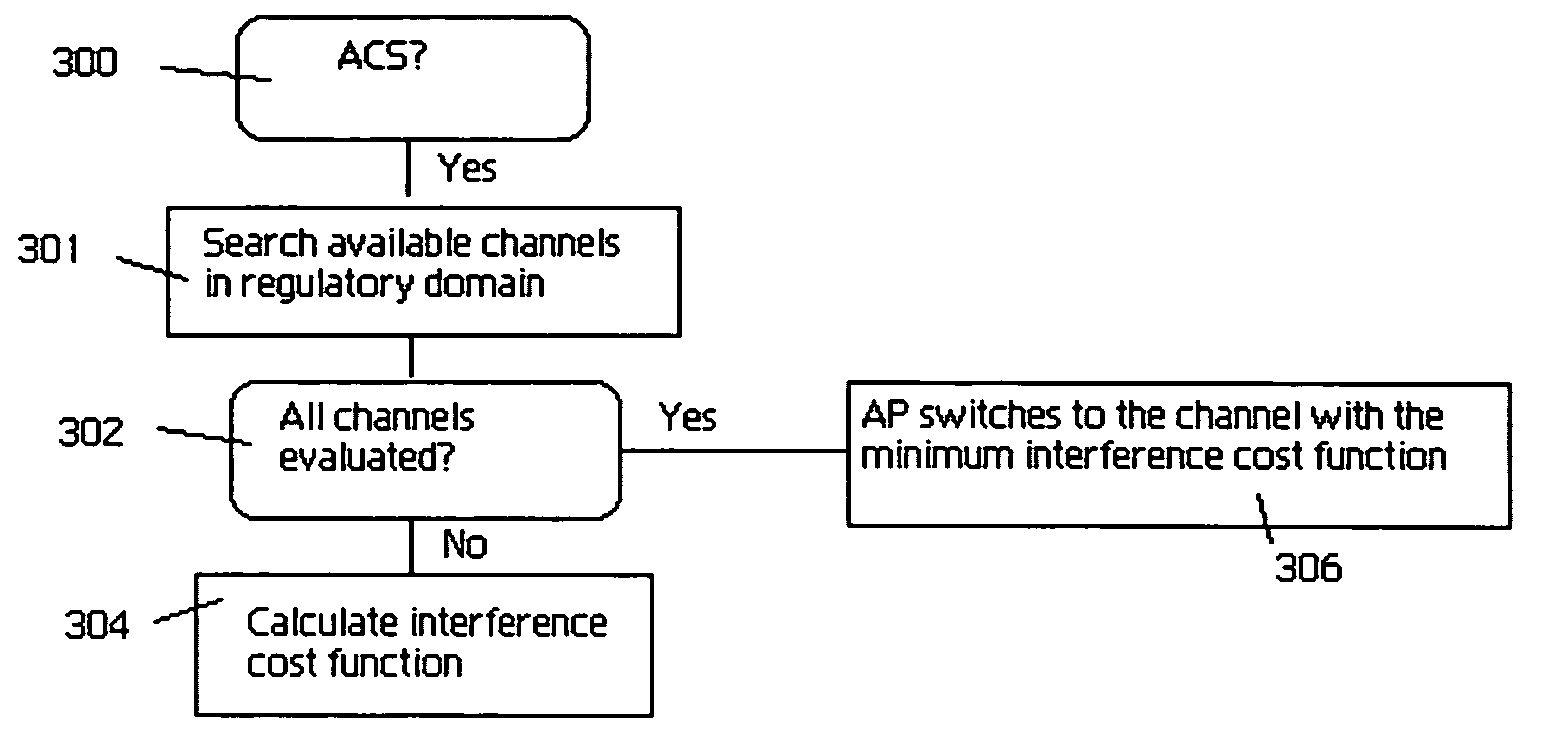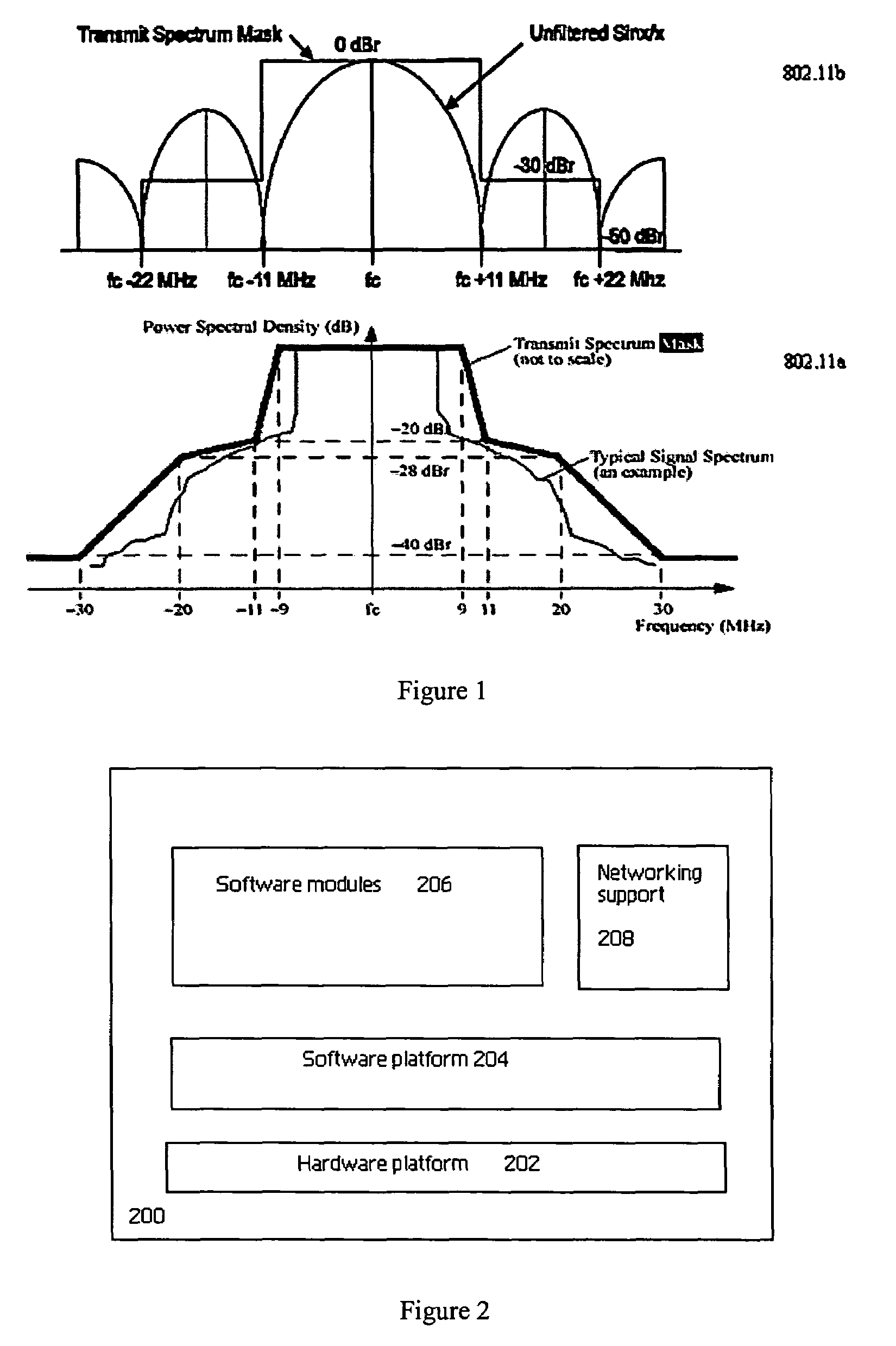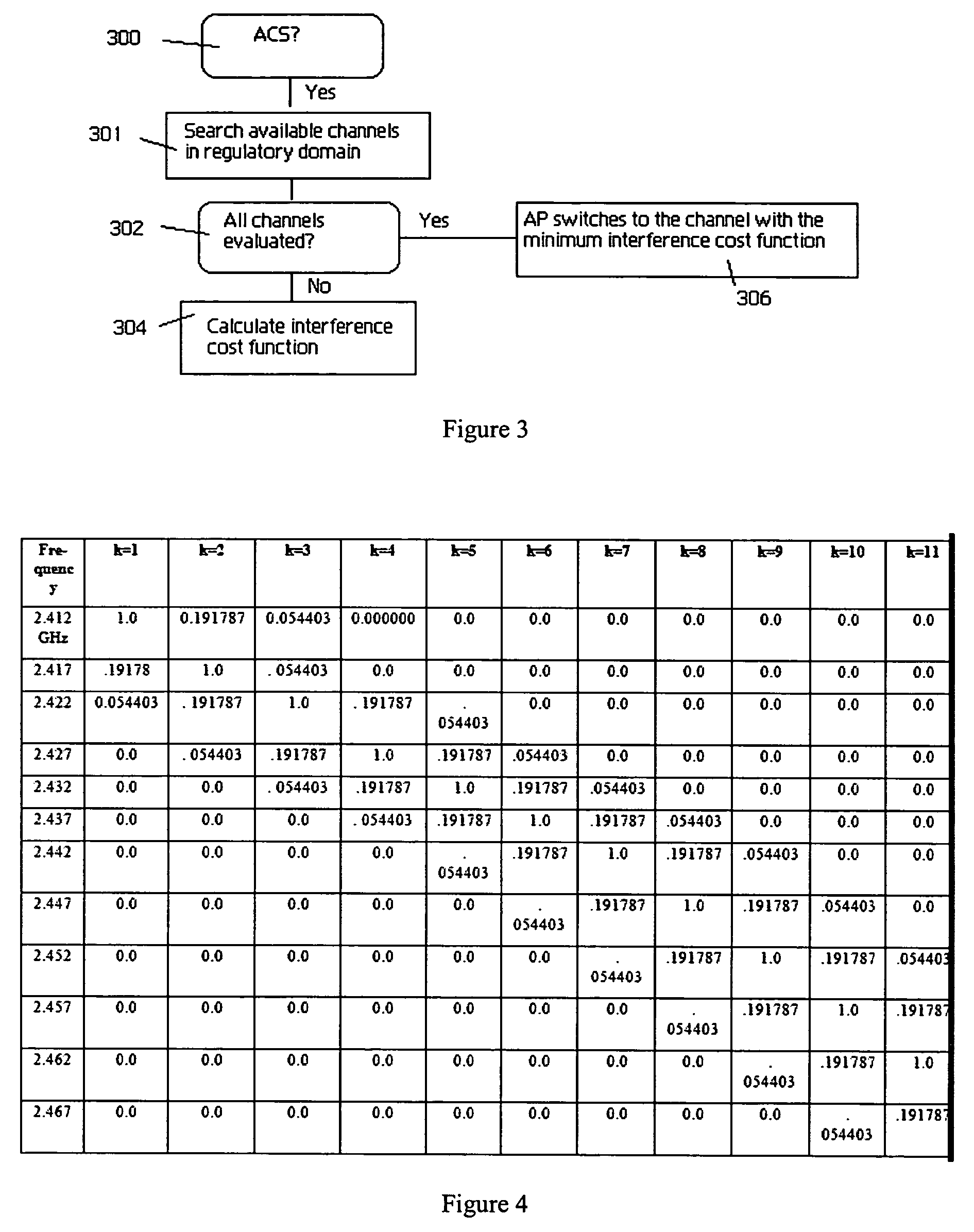Wireless access point (AP) automatic channel selection
a wireless access point and automatic channel technology, applied in the direction of transmission monitoring, power management, wireless commuication services, etc., can solve the problems of signal interference, .11 modes are much different from each other, and the performance of a wireless lan is affected, so as to reduce the interference level in the network, the effect of maximum coverage and high throughpu
- Summary
- Abstract
- Description
- Claims
- Application Information
AI Technical Summary
Benefits of technology
Problems solved by technology
Method used
Image
Examples
Embodiment Construction
[0031]By way of additional background, FIG. 2 illustrates a representative access point 200 (AP) in which the present invention may be implemented. As is well-known, an access point is a device that includes various software modules 206 executing on a hardware 202 and software platform 204, and suitable networking support 208. A representative access device may have native support for one or more of the following networking options: 802.1d compliant bridging, GRE (RFC 2784), DHCP Server (RFC 2131), DHCP Client, DHCP Relay, DHCP Option 82 (RFC 3046), PPPoE Client (RFC 2516), DNS Relay, Static IP routing, Network Address Translation (RFC 1631), one-to-one NAT for VPN support, RIP v1 (RFC 1058) and v2 (RFC 1723), SMTP (email) redirection, ICMP (RFC 792), ARP (RFC 826) and CIDR (RFC 1519). The device may also include suitable network management support software, such as: SNMP v1 and v2, MIB-II with TRAPS, MIB for user session control, RADIUS Authentication MIB (RFC 2618), RIP v2 extensi...
PUM
 Login to View More
Login to View More Abstract
Description
Claims
Application Information
 Login to View More
Login to View More - R&D
- Intellectual Property
- Life Sciences
- Materials
- Tech Scout
- Unparalleled Data Quality
- Higher Quality Content
- 60% Fewer Hallucinations
Browse by: Latest US Patents, China's latest patents, Technical Efficacy Thesaurus, Application Domain, Technology Topic, Popular Technical Reports.
© 2025 PatSnap. All rights reserved.Legal|Privacy policy|Modern Slavery Act Transparency Statement|Sitemap|About US| Contact US: help@patsnap.com



